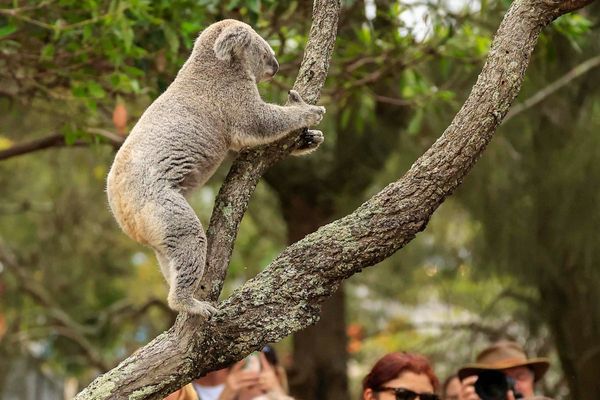Weighing up to 2 kilograms and measuring between 70 and 90 centimetres, Trilophosuchus rackhami would have been the "most adorable reptile" roaming north-west Queensland about 13.5 million years ago, scientists say.
For the first time, researchers have used CT scanning technology to reveal previously unknown details about the creature's anatomy and its connections to species in other parts of the world.
The 'cutest little' croc
In 1993, Trilophosuchus rackhami was described and named in honour of well-known Riversleigh Fossil Centre manager Alan Rackham.
The term Trilophosuchus translates to 'three-crested' while the rackhami represents Mr Rackham's last name.
The prehistoric miniature crocodile was most likely a land-based reptile living in the forests that once covered much of the region.
University of Queensland's Faculty of Science PhD candidate Jorgo Ristevski lead the research that examined the skull of Trilophosuchus rackhami.
"By micro-CT scanning the beautifully preserved skull, we were able to digitally separate each bone," Mr Ristevski said.
"It would have been the most adorable-looking animal. I think we're missing out because it is extinct.
"It would have been the cutest little reptile."
Mr Ristevski was able to draw connections between Trilophosuchus rackhami and other species from across the globe.
"For one of the studies, I digitally reconstructed the brain cavity of Trilophosuchus rackhami and found that it resembles that of some distantly related and potentially terrestrial extinct crocs from Africa and South America that existed 50 to 100 million years ago," he said.
"We were quite surprised to find this because, evolutionarily speaking, Trilophosuchus rackhami is more closely related to today's crocs.
"This may indicate that Trilophosuchus rackhami spent more time on land than most living crocs."
Important for future research
Mr Ristevski said the findings would be useful in interpreting the evolutionary relationships between extinct crocs in future research.
"Research like this helps us to better understand evolutionary relationships of the Trilophosuchus and other extinct crocodilians," he said.
"We can see how crocodilians have evolved over millions of years, not just in Australia but in a more global context."
Changing technology also played a crucial part in learning more about the evolution of species, Mr Ristevski said.
"We were only able to conduct this research because of the availability of CT technology," he said.
"It's exciting to think of what technology will advance in the next 30, 40, 50 years to aid further research.
"In science, you cannot answer every question with one study. For each question you potentially answer there are 10 more questions that arise from it.
"And that's exciting — science is just like a never-ending quest for answers."







